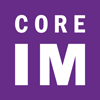Core IM
Aspirin has been widely used for primary prevention of cardiovascular disease for the past several decades. However, recent randomized controlled trials have demonstrated new evidence that calls into question the balance of risk versus benefit for aspirin used for primary prevention, culminating in updated recommendations from both the American College of Cardiology (ACC) and the United States Preventative Services Task Force (USPSTF). However, due to powerful clinical inertia, many physicians would benefit from an informative evidence update on this topic to make the most appropriate recommendations regarding aspirin for primary prevention.
First, listen to the podcast. After listening, ACP members can take the CME/MOC quiz for free.
CME/MOC:
Up to 0.5
AMA PRA Category 1 Credits ™ and MOC Points
Expires October 21, 2025
active
Cost:
Free to Members
Format:
Podcasts and Audio Content
Product:
Core IM
Welcome to Core IM, a virtual medical community! Core IM strives to empower its colleagues of all levels and backgrounds with clinically applicable information as well as inspire curiosity and critical thinking. Core IM promotes its mission through podcasts and other multimodal dialogues. ACP has teamed up with Core IM to offer continuing medical education, available exclusively to ACP members by completing the CME/MOC quiz.

- Q1: “Have you been getting questions about aspirin?”
- Patients are hearing about aspirin from a variety of sources differing drastically in credibility: USPSTF? The NY Times? Friends and family?
- As clinicians practicing evidence-based medicine, what is our best approach to educating patients about aspirin?
- Q2: “What do the guidelines say about aspirin’s role in primary prevention?”
- ACC/AHA guidelines (2019):
- For patients aged 40-70 years, aspirin should be used infrequently for primary prevention [IIb recommendation]
- For patients aged >70 years, the evidence does not support the use of aspirin for routine primary prevention [class III recommendation]
- USPSTF guidelines:
- For patients aged 40-59 years with a 10-year ASCVD risk >10%, starting aspirin for primary prevention should be discussed as a shared decision (grade C)
- For patients aged >60 years: do not initiate aspirin for primary prophylaxis (grade D)
- ACC/AHA guidelines (2019):
- Q3: “Why and how does aspirin work?”
- Prelude: Atherosclerotic Progression
- Lipoproteins get stuck in vulnerable parts of blood vessel walls, leading to inflammation
- Macrophage infiltration, fibroblast proliferation, and continued development of fatty atheroma and fibrous cap
- Aspirin mostly* does not exert its effects here
- Climax: Plaque Rupture
- Chronic weakening of the fibrous cap extracellular matrix by infiltrating macrophages
- Rupture of the fibrous cap due to mechanical shear leads to exposure of the necrotic lipid core, attracting platelets
- Platelets and fibrin aggregate to form a thrombus, occluding the blood vessel
- ** Aspirin exerts its effects by inhibiting platelet activation and aggregation at this step
- For the average primary prophylaxis patient, more emphasis should be placed on controlling the progression of atherosclerosis > inhibiting platelets in the unlikely setting of plaque rupture
- Prelude: Atherosclerotic Progression
- Q4: “What does the latest evidence on aspirin really show us?”
- ASCEND Trial (2018)
- Population: Adults aged >40 years with diabetes but no CVD,
- Parameters: RCT, 100mg aspirin versus placebo, followed for 7.4 years
- Outcomes: Aspirin group experienced a 1% ARR in CV events but 1% increased risk in major bleeding, translating to a negligible net benefit
- ARRIVE (2018)
- Population: Men>55 years and women >60 years with average CV risk
- Parameters: RCT, 100mg aspirin versus placebo, followed for 5 years
- Outcomes: Similar low CV event rates between the aspirin (4.3%) and control group (4.5%)
- ASPREE (2018)
- Population: Adults aged >70 years without CVD
- African Americans and Hispanic Patients → over > 65 years
- Parameters: RCT, 100mg aspirin versus placebo, followed for 5 years
- Outcomes: Similar low CV-related mortality rates between the aspirin (1%) and control group (1.2%)
- Caveat: 0.7% higher rate of all-cause mortality in the aspirin group compared to control group, driven largely by a paradoxically higher rate of colorectal cancer deaths
- Population: Adults aged >70 years without CVD
- USPSTF Meta-Analysis (2022)
- Includes all three trials discussed above as well as prior data
- Conclusion: Aspirin use is associated with a reduction in CV events with an OR of 0.90 (CI 0.85-0.95), and an increase in total major bleeding with an OR of 1.44 (CI 1.32-1.57).
- However, aspirin had no statistically significant impact on CVD-related mortality or all-cause mortality.
- ASCEND Trial (2018)
- Q5: “How should we approach individualizing aspirin decision-making?”
- A seemingly easy way out → 10-year ASCVD Risk Calculator
- Helps synthesize and quantify data but is less generalizable than most clinicians realize
- Does not capture a variety of key risk factors: Smoker pack-year history? Family history of CVD? Obesity? Chronic inflammatory diseases? Coronary Calcium Score (CAC)?
- What are some particular risk factors that I should consider?
- Poorly controlled diabetes/metabolic syndrome
- Diving beyond the traditional measurements: A1c, Lipid Panel
- A high TG to HDL ratio is indicative of insulin resistance
- Lipoprotein (a) / Lp (a)
- Obtaining Lp (a) levels in presence of a positive family history of CVD is helpful for further risk stratification
- Many patients with family hypercholesterolemia are found to have higher levels of Lp (a)
- A higher Lp (a) level is an independent and causal risk factor for CVD
- Coronary Calcium Score/ CAC
- Another helpful tool for stratification, especially for patients in intermediate risk categories
- MESA Study (2021)
- Population: Adults without CVD
- Parameters: Observational ,follow-up for 16 years for CVD incidence
- Outcomes: Identified a subgroup of aspirin-naive patients with CAC> 100 or > 400 who would have benefitted from aspirin when their ASCVD risk scores were pooled with CAC (NNT<NNH).
- For patients with CAC=0, aspirin demonstrated NNT>NNH.
- Poorly controlled diabetes/metabolic syndrome
- What are some reasons to continue or start aspirin?
- Presence of secondary prevention indications (CAD, CVA, PAD)
- Presence of uncontrollable/refractory traditional risk factors (Ex. can’t quit heavy smoking, can’t control BP etc.)
- Presence of non-traditional or unmeasured risk factors not accounted for by traditional calculators
- Who should start aspirin is a slightly different conversation than who should continue aspirin
- Patients who are tolerating long term aspirin without bleeding complications are, on average, good candidates for continuing aspirin.
- For patients looking to start aspirin, the recent evidence shift in benefits/harms is more nuanced to balance and requires individualized risk assessment.
- Ultimately, know that the majority of patients will be OK regardless of the final decision on aspirin alone.
- A seemingly easy way out → 10-year ASCVD Risk Calculator
- Summary: Shared decision-making on aspirin for primary prevention is much more nuanced than the ASCVD calculator can elaborate. Taking a robust history, understanding each patient’s risk tolerances, and utilizing new tools such as Lp (a) and CAC are all good ways to individualize this decision. However, proper management of known, modifiable risk factors remains the centerpiece of ASCVD prevention.
Contributors
Shreya Trivedi, MD, ACP Member – Editor, MOC Questions
Gregory Katz, MD – Host, Editor, MOC Questions
Cary Blum, MD – Host, Editor, MOC Questions
Yichi Zhang – Editor, MOC Questions
Reviewers
Marty Fried, MD, FACP
Kinjan Parikh, MD
Those named above, unless otherwise indicated, have no relevant financial relationships to disclose with ineligible companies whose primary business is producing, marketing, selling, re-selling, or distributing healthcare products used by or on patients. All relevant relationships have been mitigated.
Release Date: October 21, 2022
Expiration Date: October 21, 2025
CME Credit
This activity has been planned and implemented in accordance with the accreditation requirements and policies of the Accreditation Council for Continuing Medical Education (ACCME) through the joint providership of the American College of Physicians and Core IM. The American College of Physicians is accredited by the ACCME to provide continuing medical education for physicians.
The American College of Physicians designates this enduring material (podcast) for 0.50 AMA PRA Category 1 Credit™. Physicians should claim only the credit commensurate with the extent of their participation in the activity.
ABIM Maintenance of Certification (MOC) Points
Successful completion of this CME activity, which includes participation in the evaluation component, enables the participant to earn up to 0.50 medical knowledge MOC Point in the American Board of Internal Medicine’s (ABIM) Maintenance of Certification (MOC) program. Participants will earn MOC points equivalent to the amount of CME credits claimed for the activity. It is the CME activity provider’s responsibility to submit participant completion information to ACCME for the purpose of granting ABIM MOC credit.
How to Claim CME Credit and MOC Points
After listening to the podcast, complete a brief multiple-choice question quiz. To claim CME credit and MOC points you must achieve a minimum passing score of 66%. You may take the quiz multiple times to achieve a passing score.


